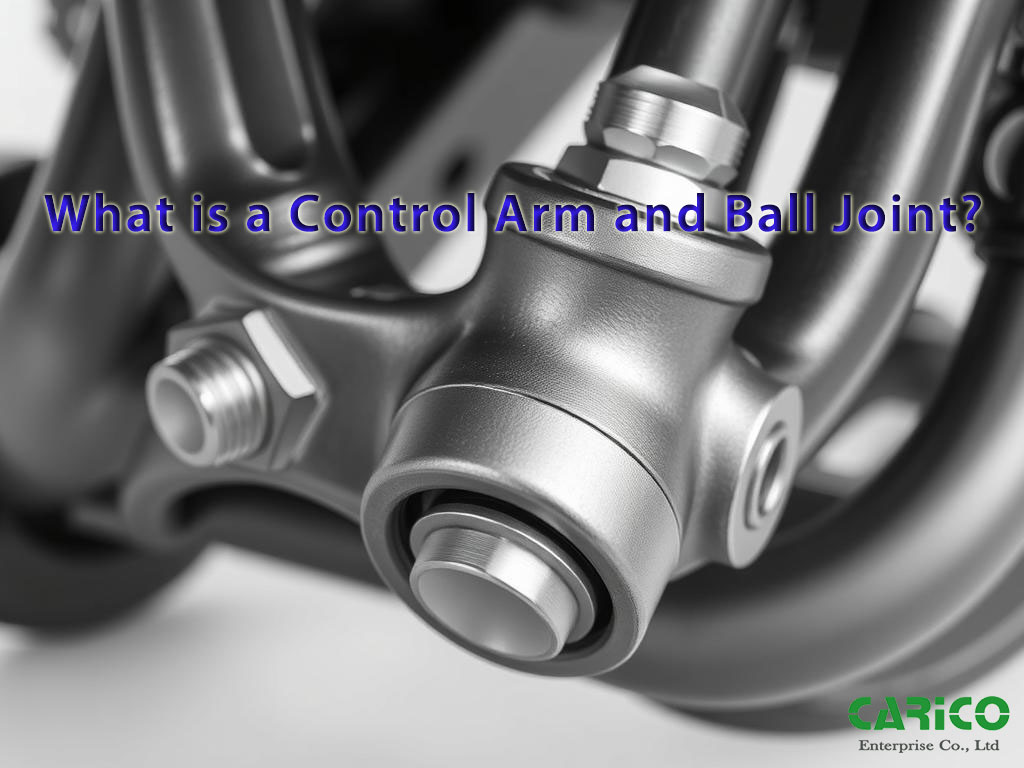What is a Control Arm and Ball Joint?

Control arms and ball joints are essential components of a vehicle's suspension and steering systems, working together to ensure smooth, stable, and safe driving.
Control Arm
A control arm, often referred to as an A-arm or wishbone, is a suspension link that connects the wheel hub to the vehicle's frame, allowing the wheels to move up and down while maintaining proper alignment. Control arms manage the motion of the wheels in response to steering and road conditions, providing a pivot point that allows the suspension to absorb shocks from the road.
- Types of Control Arms: There are upper and lower control arms. Upper control arms are typically found in front suspension systems, while lower control arms are present in both front and rear suspensions.
- Function: Control arms hold the wheel hub in place, allowing it to move vertically as the suspension compresses and rebounds. This maintains the wheel's camber, caster, and toe settings, which are critical for proper vehicle alignment, stability, and handling.
Ball Joint
A ball joint is a spherical bearing that connects the control arm to the steering knuckle, allowing for smooth, multi-directional movement. This pivoting capability enables the wheels to turn left and right, as well as move up and down with the suspension.
- Types of Ball Joints: Ball joints can be load-carrying or non-load-carrying. Load-carrying ball joints support the vehicle's weight, while non-load-carrying ball joints are primarily involved in steering alignment.
- Function: Ball joints act as a flexible connector that allows the suspension to move while enabling the wheels to pivot for steering. They absorb impacts from bumps and potholes, contributing to the vehicle's overall handling and comfort. Properly functioning ball joints are critical for vehicle safety, as failure can lead to loss of control.
How Control Arms and Ball Joints Work Together
Control arms and ball joints form a crucial link between the suspension and steering systems. The control arm provides stability and alignment, while the ball joint offers the necessary flexibility for steering and suspension movements. This collaboration allows for smooth ride quality, precise steering, and effective shock absorption. Together, they maintain tire contact with the road, which is vital for traction, braking, and overall control.
How to Diagnose Control Arm and Ball Joint Problems
Diagnosing problems with control arms and ball joints is essential for maintaining vehicle safety and performance. Here are some common signs and diagnostic methods:
- Visual Inspection: Look for visible damage, such as cracks, excessive rust, or worn bushings. Check for any play or movement by physically moving the control arm and ball joint.
- Unusual Noises: Clunking or creaking noises, especially when driving over bumps or making turns, can indicate worn ball joints or control arms.
- Steering Issues: If the steering feels loose, wanders, or has a delay in response, it could be due to worn control arms or ball joints.
- Uneven Tire Wear: Check for uneven or rapid tire wear, which can result from poor alignment caused by faulty control arms or ball joints.
- Vehicle Handling: Noticeable changes in vehicle handling, such as pulling to one side or excessive body roll during turns, may signal problems.
Diagnostic Tips
- Jack and Wiggle Test: Safely lift the vehicle and wiggle the wheel vertically and horizontally. Excessive movement could indicate worn control arms or ball joints.
- Use of Pry Bar: With the vehicle lifted, use a pry bar to gently apply pressure on the ball joint or control arm to detect play or movement beyond the manufacturer's specifications.
Common Issues and Maintenance Tips
Common Issues:
- Wear and Tear: Over time, control arms and ball joints can wear out due to constant movement and exposure to road debris. Symptoms of wear include clunking noises, uneven tire wear, loose steering, and vibrations.
- Corrosion and Damage: Rust or damage from impacts can weaken these components, affecting their performance and safety.
Maintenance Tips:
- Regular Inspections: Check control arms and ball joints for signs of wear, corrosion, or damage during routine maintenance, such as tire rotations or alignments.
- Lubrication: Ensure that ball joints are properly lubricated to reduce friction and wear.
- Replacement: Replace worn or damaged control arms and ball joints promptly with high-quality parts. It's important to use components that meet or exceed OEM specifications to ensure safety and performance.
Conclusion
Understanding the roles of control arms and ball joints is essential for keeping your vehicle's suspension and steering systems in top condition. These components work together to provide a safe, smooth, and comfortable driving experience by maintaining proper wheel alignment and absorbing road impacts. Regular inspections and timely replacements are crucial for vehicle safety and performance. For reliable and high-quality suspension parts, trust Carico to meet your automotive needs. If you require assistance or premium parts, contact us to explore how Carico can support your vehicle's performance and safety.

